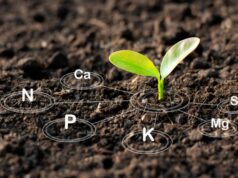Introduction
In recent years, there has been a growing concern about the use of chemical fertilizers and pesticides in agriculture. These synthetic substances are widely used to enhance crop growth and protect them from pests and diseases. However, their excessive use has been associated with several environmental and health problems, including soil degradation, water pollution, and toxicity to humans and wildlife.
Vermiponics offers a sustainable and innovative farming method that can reduce the need for chemical fertilizers and pesticides. By combining aquaponics with vermiculture, vermiponics provides a natural and nutrient-rich environment for plant growth, while also promoting water conservation and soil health.
Vermiponics, a new and innovative farming method, offers a promising solution to this problem. In this article, we will explore what vermiponics is, how it works, and how it can reduce the need for chemical fertilizers and pesticides.
What is Vermiponics?
Vermiponics is a combination of aquaponics and vermiculture. Aquaponics is a sustainable farming method that combines aquaculture (raising aquatic animals) with hydroponics (growing plants in water). Vermiculture, on the other hand, is the practice of using earthworms to convert organic waste into nutrient-rich compost.
Vermiponics combines these two methods by using earthworms to convert fish waste into compost, which is then used as a natural fertilizer for plants. The plants, in turn, filter the water and provide a clean environment for the fish.
Key Features
- Reduced water usage: Vermiponics requires less water than traditional hydroponics, as the worms help to break down organic matter and retain moisture in the soil. This can result in significant water savings and make vermiponics a more sustainable option for growing crops.
- Higher nutrient content: Vermiponic systems produce crops with higher nutrient content compared to traditional farming methods. The use of organic matter and compost in vermiponics results in healthier soil and crops that are more nutrient-dense.
- Reduced environmental impact: Vermiponics reduces the environmental impact of agriculture by decreasing the need for chemical fertilizers and pesticides. This helps to reduce water pollution and soil degradation caused by conventional farming practices.
- Improved crop yields: Vermiponic systems can produce higher crop yields than traditional farming methods due to the increased nutrient content of the soil and the ability of worms to aerate the soil and improve drainage.
- Lower costs: Vermiponics can be a cost-effective alternative to traditional farming methods. The initial investment for vermiponic systems is higher than traditional farming methods, but the long-term cost savings can outweigh the initial investment.
- Versatility: Vermiponics can be used to grow a variety of crops, including fruits, vegetables, and herbs. This versatility makes vermiponics an attractive option for small-scale farmers and urban growers.
How does Vermiponics work?
Vermiponics systems consist of a fish tank, a grow bed, and a worm bin. The fish tank is filled with water and fish, which produce waste that is rich in nutrients. The water from the fish tank is then pumped into the grow bed, where it is filtered by the plants.
The filtered water is then returned to the fish tank, creating a closed-loop system that minimizes water waste. At the same time, the earthworms in the worm bin convert the fish waste into compost, which is used to fertilize the plants in the grow bed.
The Benefits of Vermiponics
- Natural fertilization: Vermiponics relies on natural compost to fertilize plants, which eliminates the need for chemical fertilizers.
- Reduced pesticide use: Vermiponics promotes healthy plant growth and provides a natural defense against pests and diseases, reducing the need for synthetic pesticides.
- Water conservation: Vermiponics uses a closed-loop system that minimizes water waste, making it a sustainable and water-efficient farming method.
- Improved soil health: Vermiponics produces nutrient-rich compost that improves soil health and reduces soil degradation.
- Increased crop yields: Vermiponics provides a consistent and nutrient-rich environment for plant growth, resulting in higher crop yields.
Case Study: Vermiponics in Action
One example of a successful vermiponics project is the Southside Community Land Trust’s City Farm in Providence, Rhode Island. City Farm uses vermiponics to grow a variety of vegetables and herbs, including lettuce, kale, and basil.
According to the Southside Community Land Trust, vermiponics has allowed them to reduce their use of chemical fertilizers and pesticides while increasing their crop yields. They have also found that vermiponics produces healthier plants that are more resistant to pests and diseases.
Conclusion
In conclusion, vermiponics is a sustainable and eco-friendly farming method that can reduce the need for chemical fertilizers and pesticides. It offers numerous benefits, including reduced water usage, higher nutrient content, improved crop yields, and lower costs. Vermiponics is a versatile method that can be used to grow a variety of crops and is an attractive option for small-scale farmers and urban growers. With the increasing demand for sustainable agriculture practices, vermiponics is a promising solution that can help to reduce the environmental impact of agriculture while providing nutritious and healthy food.
While vermiponics is still a relatively new farming method, it has shown promising results in reducing the environmental impact of agriculture while increasing crop yields. As more farmers and communities adopt vermiponics.







